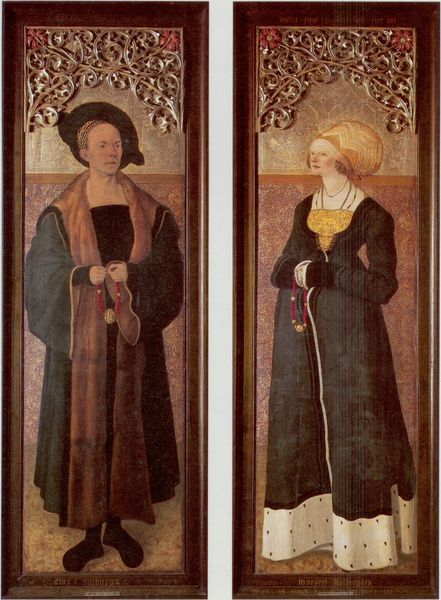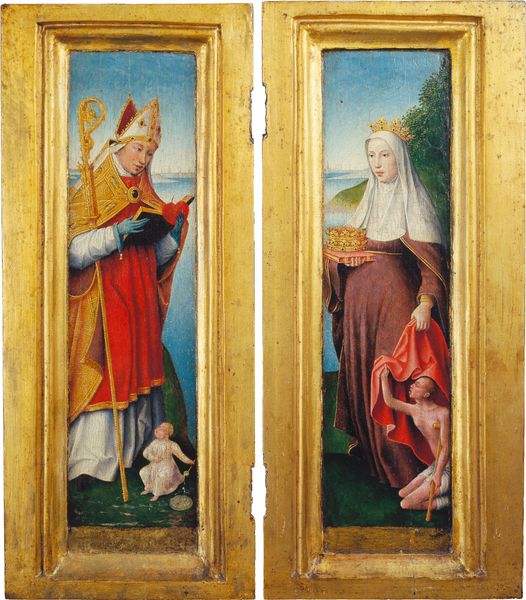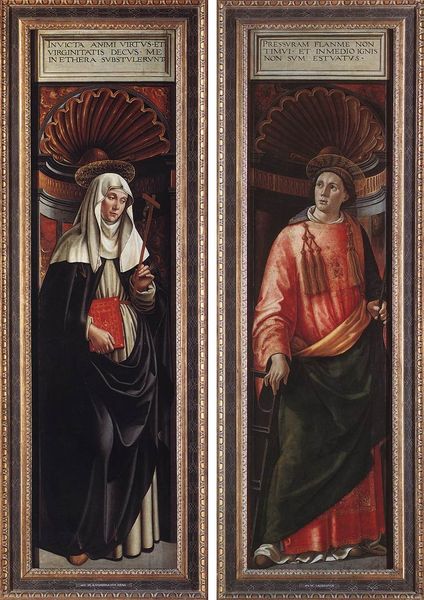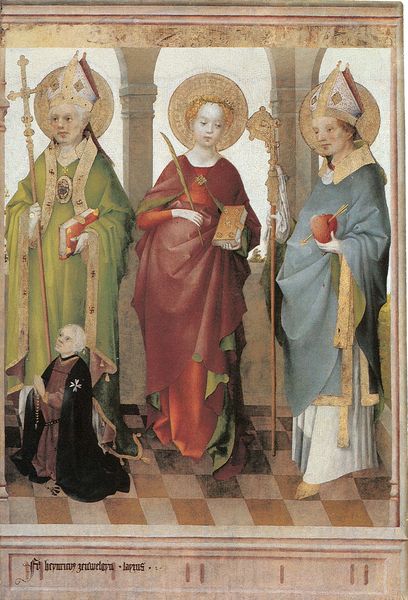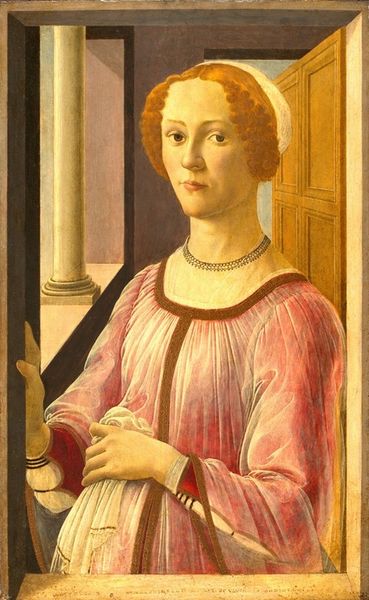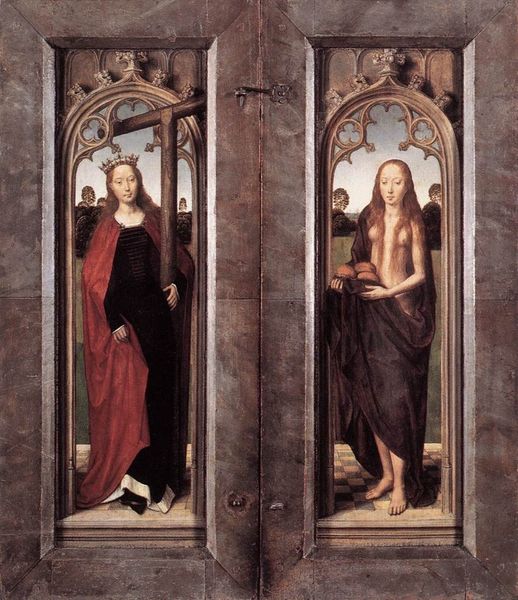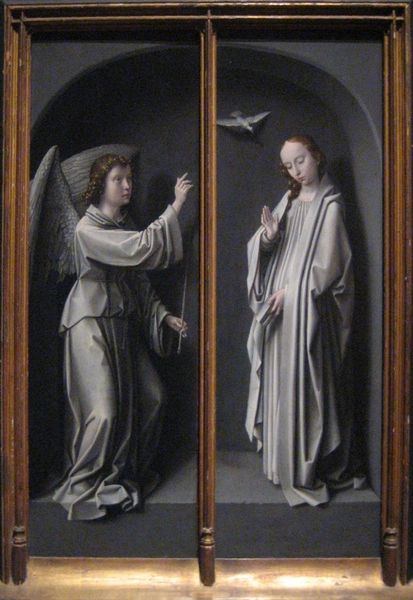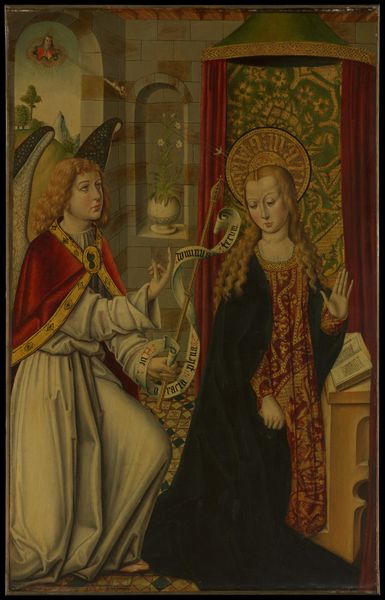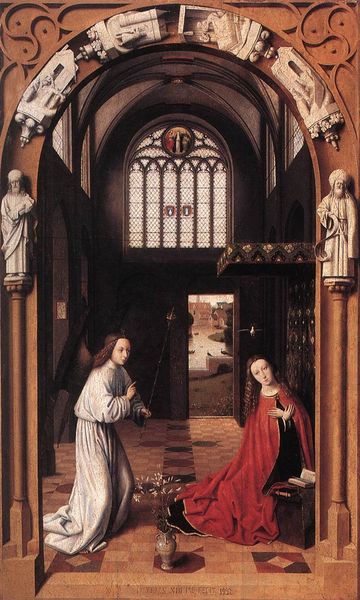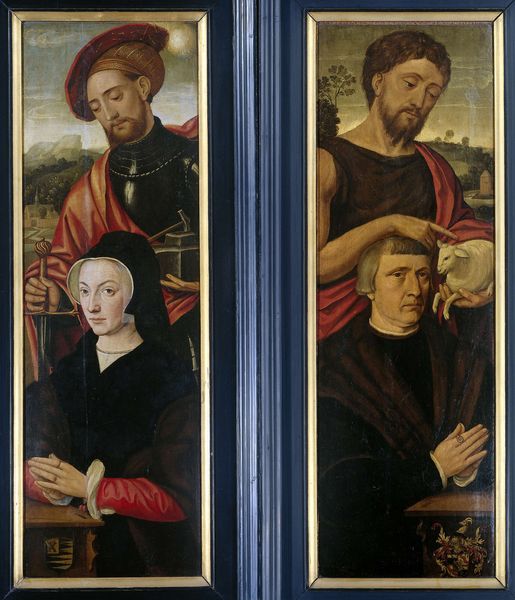
painting, oil-paint
#
portrait
#
painting
#
oil-paint
#
genre-painting
#
history-painting
#
early-renaissance
#
portrait art
Dimensions: 57 x 17 cm
Copyright: Public domain
Curator: Before us is Hans Memling’s oil on wood panel, “John the Baptist and St. Lawrence,” created around 1480. The two figures are presented in separate arched panels. Editor: My first impression is the stillness of these two figures. They feel contained, framed by architecture and somewhat melancholy. The contrasting colours—purple against vibrant red—enhance the overall composition. Curator: Indeed, the very specific use of oil paint in layering techniques allows Memling to give that vibrant depth. He achieves stunning realism using multiple thin layers, manipulating light and texture, reflective of the time's advanced craft techniques. The wood panel itself would have been sourced and prepared meticulously. Editor: I’m drawn to the lamb with John the Baptist; it's more than just a creature. The lamb has always carried the weight of sacrifice and purity. Saint Lawrence is holding a grill. Can we interpret that as a reference to martyrdom? Curator: Absolutely. And to take a more material view, we also notice Saint Lawrence’s costly book, a symbol of erudition made valuable not just through skill and artistry, but in the access it provides to the production and understanding of knowledge in his time. Consider too the expensive pigments and dyes. Editor: Memling's understanding of iconography is striking. John’s unassuming robe and bare feet denote humility. Lawrence's clerical attire—a dalmatic—asserts his rank in the church, yet there is a pensive, human element that transcends their status. Curator: True, we mustn’t forget the role of the patron in all of this; someone with wealth wanted, or was able to invest in, the making of something beautiful that celebrated both craft and devotion. How many artisans had to give their time and talents to achieve the work, to realize it? Editor: It's interesting to note that beyond simply seeing religious figures, viewers, then and now, find ways to connect with these representations. They're vessels filled with the symbolism that speaks to universal experiences. Curator: Agreed. Whether we’re looking at pigment origins or symbolism related to sacrifice, it is worth noting how those aspects combine to tell stories across generations, from artisan to patron, painter to viewer. Editor: Exactly. These portraits capture something very deep: enduring values.
Comments
No comments
Be the first to comment and join the conversation on the ultimate creative platform.

